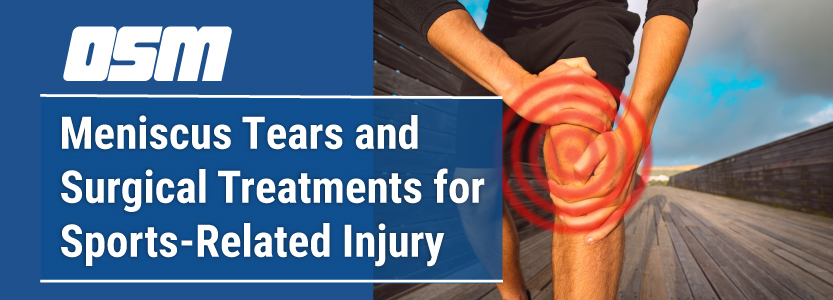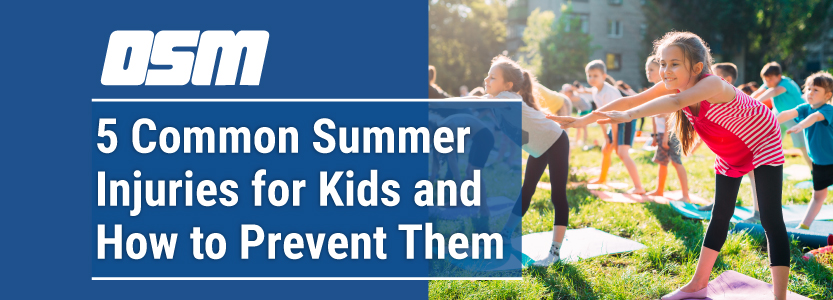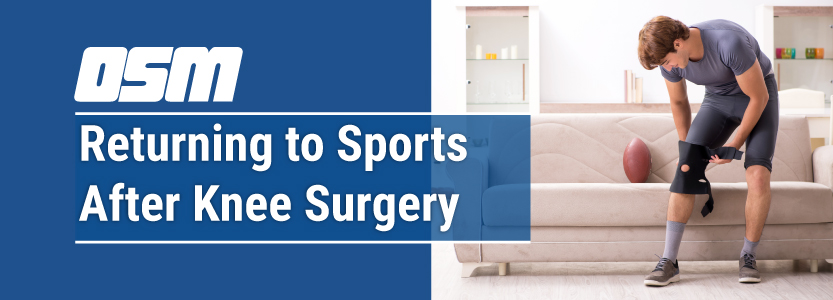Article featured on MedStar Health
Along with all of the outdoor fun comes more opportunity for activity-related injury. In addition to nature-related injuries and illnesses, such as tick bites and sunburn, summer activities present more chances for broken bones, concussions, and other bumps and bruises. As sports medicine physicians, here are some of the most common summer injuries we see in warm weather months and how you can help prevent them at home.
Common summer injuries.
1. Bicycle injuries
Bike accidents are one of the most common summer injuries because the warmer weather presents more chances for you and your kids to ride together. But, a fall from a bike accident can be dangerous, resulting in cuts, scrapes, fractures, or concussions. If vehicles are involved, a bike crash could even be fatal.
Tips to prevent bicycle injuries: You can prevent severe head injuries from bike crashes by wearing a helmet. In fact, the Bicycle Helmet Safety Institute suggests that wearing a helmet can reduce the risk of head and brain injury by up to 88% for both adults and children. Other protective gear, such as knee and elbow pads, can also help to minimize injury from falls. And, a properly-fitted helmet and padding can reduce your risk of injury from skateboard and scooter accidents as well.
2. Playground injuries
More free time on summer vacation means more time spent visiting the local park or backyard playground. Unfortunately, monkey bars, slides, and swings commonly cause fall-related fractures and head injuries over the summer, even if the equipment is properly maintained.
Tips to prevent playground injuries: Playground falls are inevitable, but choosing a playground built over soft surfaces can minimize the risk of severe injury. Avoid playgrounds on concrete or gravel and instead look for playgrounds that hover soft surfaces, like rubber or wood chips. Active supervision is also important, as you may be able to help prevent a fall if you’re within arms reach.
3. Trampoline injuries
Concussions and fractures are also common in the summer months as a result of jumping on a trampoline. Bloody noses, bumps, and bruises may not be as serious but they’re also a concern.
Tips to prevent trampoline injuries: Many trampoline injuries involve a collision between two or more people, so one of the best ways to minimize the risk of injury is to only allow one person to use the trampoline at a time. It’s also a great idea to attach a net around the outside of the trampoline to minimize falls.
4. Water injuries and drowning
Swimming in a pool, lake, or ocean is great exercise but water-related injuries can be fatal. Drowning is the second most common cause of death by unintentional injury from kids between the ages of one and four, according to the Centers for Disease Control and Prevention (CDC). And, even good swimmers can get injured in and around water-related activities like diving, water sports, and boating.
Tips to prevent water injuries and drowning: Adult supervision is the most effective way to prevent drowning accidents, whether you’re at the pool or in open water. Stay within arms reach when your kids are in or around the pool. If the pool is not fenced in, be sure to cover it when it is not being used. If your family is on a boat participating in or watching water sports, make sure everyone wears a Coast Guard-approved life jacket, even if you’re a good swimmer.
5. Overuse injuries
While school sports may take a break from practices during the summer, travel teams or sports camps are in full swing. Overuse injuries, such as tendonitis or Osgood-Schlatter disease in the knee, can be painful and prevent your kids from fully participating in their sports. Shoulder and elbow overuse injuries are especially common in baseball players and pitchers because of the repetitive throwing motion.
Tips to prevent overuse injuries: One of the best ways to minimize overuse injuries in kids and teenagers is to encourage them to play more than one sport. Cross-training can help prevent common ligament injuries in the knee, shoulder, and elbow. Additionally, if your child has been sedentary, it’s important to help them gradually return to their sports by slowly increasing the frequency and duration of their participation.
When to see a doctor for a summer injury
If you suspect a head injury of any kind, call a medical professional to determine if they need additional care. It’s always better to seek care sooner rather than later.
If your child had an activity-related fall, you should seek medical care if they are:
- Limping
- Unable to put use full range of motion in an extremity (e.g. arm or leg)
- Experiencing pain or tenderness when pressure is applied to a joint
- Having headaches or drowsy, as these could be signs of a concussion
Have a safe, injury-free remainder of summer!
The Orthopedic & Sports Medicine Center of Oregon is an award-winning, board-certified orthopedic group located in downtown Portland Oregon. We utilize both surgical and nonsurgical means to treat musculoskeletal trauma, spine diseases, sports injuries, degenerative diseases, infections, tumors and congenital disorders.
Our mission is to return our patients back to pain-free mobility and full strength as quickly and painlessly as possible using both surgical and non-surgical orthopedic procedures.
Our expert physicians provide leading-edge, comprehensive care in the diagnosis and treatment of orthopedic conditions, including total joint replacement and sports medicine. We apply the latest state-of-the-art techniques in order to return our patients to their active lifestyle.
If you’re looking for compassionate, expert orthopedic surgeons in Portland Oregon, contact OSM today.
Phone:
503-224-8399
Address
17355 Lower Boones Ferry Rd Suite 100A
Lake Oswego, OR 97035
Hours
Monday–Friday
8:00am – 4:30pm










